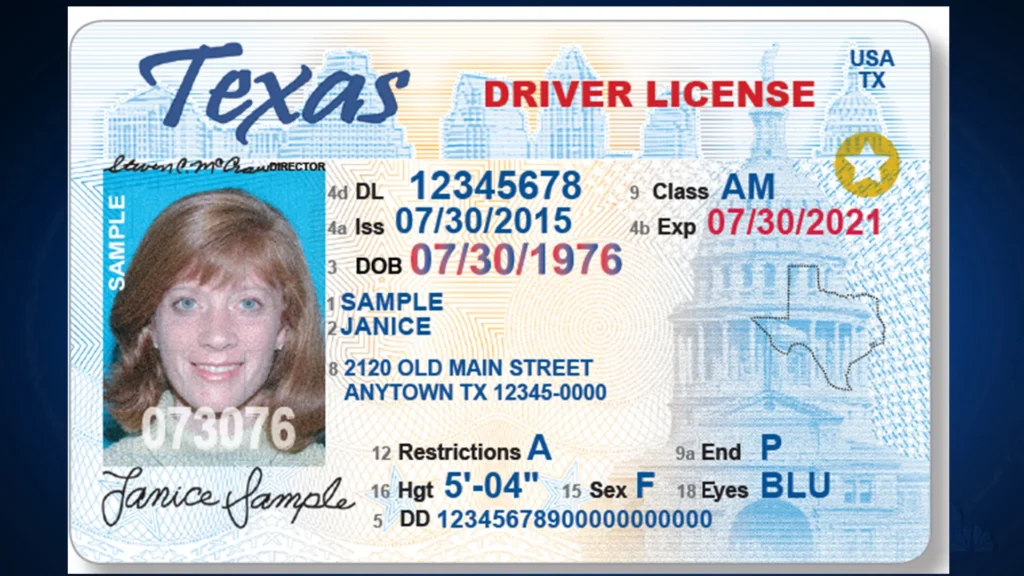the Driving License Process in Texas, Obtaining a driving license in Texas can be an essential step for residents, newcomers, and visitors alike. With its sprawling landscapes, vibrant cities, and unique culture, Texas is best explored by car. Whether you’re a teenager eager to hit the road or an adult seeking to convert your foreign license, understanding the driving license process in Texas is crucial. This blog post will provide a detailed guide to navigating the process of obtaining a Texas driving license, including the different types of licenses, application steps, and essential tips.
Types of Texas Driving Licenses
In Texas, driving licenses are categorized into several types, depending on the vehicle you wish to operate:
- Class C License: This is the standard license for operating passenger cars, vans, and light trucks. Most Texas residents will apply for this type of license.
- Class A License: Required for operating a combination of vehicles with a total weight of 26,001 pounds or more, such as large trucks and trailers.
- Class B License: This license is for operating single vehicles with a weight of 26,001 pounds or more, or buses designed to carry 24 or more passengers.
- Class M License: Required for operating motorcycles or mopeds. Applicants must pass a separate written and skills test.
Steps to Obtain a Class C Driving License in Texas
Step 1: Determine Eligibility
Before applying for a Class C driving license, ensure you meet the following eligibility requirements:
- Age: You must be at least 16 years old to apply for a full Class C license. If you are younger than 18, you will need to complete a driver education course.
- Residency: You must be a resident of Texas.
Step 2: Complete a Driver Education Course
For applicants under 18, completing a driver education course is mandatory. This course typically includes:
- Classroom Instruction: A minimum of 32 hours of classroom instruction on driving rules and safety.
- Behind-the-Wheel Training: At least 14 hours of behind-the-wheel training with a licensed instructor or a qualified adult.
Once you complete the course, you will receive a certificate of completion.
Step 3: Obtain a Learner’s Permit
- Gather Required Documents: Before applying for a learner’s permit, gather the necessary documents, including:
- Proof of identity (such as a birth certificate or passport)
- Proof of Social Security number
- Proof of Texas residency (such as a utility bill or lease agreement)
- Visit a Texas Department of Public Safety (DPS) Office: Go to your local DPS office and fill out the application for a learner’s permit. Be prepared to pay the required fee.
- Pass the Written Test: Take and pass the written knowledge test. The test will cover road signs, traffic laws, and safe driving practices.
- Receive Your Learner’s Permit: If you pass the test, you will be issued a Class C learner’s permit, allowing you to practice driving with a licensed adult.
Step 4: Practice Driving
With your learner’s permit, you must log at least 30 hours of supervised driving, including 10 hours of night driving. Ensure you practice a variety of driving conditions and scenarios to build your skills and confidence.
Step 5: Schedule the Road Test
- Book Your Road Test: Once you feel ready, schedule your road test through the Texas DPS website or by contacting your local office.
- Prepare Your Vehicle: Ensure the vehicle you plan to use for the test is in good working condition, including functioning lights, brakes, and turn signals.
Step 6: Pass the Road Test
- Take the Road Test: During the test, a DPS examiner will evaluate your driving skills, including your ability to obey traffic laws, perform maneuvers, and demonstrate safe driving practices.
- Receive Your Class C License: If you pass the road test, you will be issued a Class C driving license. If you are under 18, you may be subject to certain restrictions until you turn 18.
Step 7: Upgrade to a Full License
If you are under 18, you will hold a provisional license until you reach the age of 18. Once you do, your license will automatically upgrade to a full Class C license without restrictions.
Important Tips for New Drivers
- Study the Texas Driver Handbook: Familiarize yourself with Texas traffic laws, road signs, and safe driving practices by studying the Texas Driver Handbook, available on the Texas DPS website.
- Consider Taking a Defensive Driving Course: Completing a defensive driving course can enhance your skills and may help lower your insurance rates.
- Stay Calm During the Test: On the day of your road test, stay calm and focused. Deep breathing can help manage anxiety, and remember that the examiner is there to evaluate your driving skills.
- Know Your Rights: Familiarize yourself with your rights as a driver in Texas, including what to do if you’re pulled over by law enforcement.
Conclusion
The driving license process in Texas can seem daunting, but with proper preparation and understanding of the steps involved, you can successfully navigate it. Whether you’re a teenager ready to embark on your driving journey or an adult converting a foreign license, obtaining a Texas driving license opens the door to exploring the vast and beautiful state. Follow the outlined steps, practice diligently, and you’ll be on the road in no time. Safe driving!
you might also like these:
